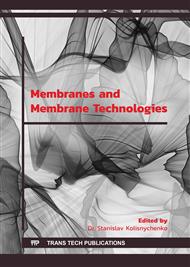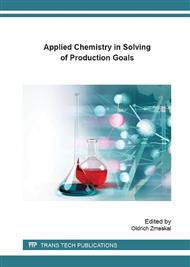[1]
Vida-Simiti I, Nemes D, Jumate N, et al.: Jom, 64 (2012), 10, 1143-1147.
DOI: 10.1007/s11837-012-0406-1
Google Scholar
[2]
Sulka G D and Parkola K G: Thin Solid Films, 515 (2006), 1, 338-345.
Google Scholar
[3]
Masuda H and Fukuda K: Science, 268 (1995), 5216, 1466-1468.
Google Scholar
[4]
Gultepe E, Nagesha D, Sridhar S, et al.: Advanced Drug Delivery Reviews, 62 (2010), 3, 305-315.
DOI: 10.1016/j.addr.2009.11.003
Google Scholar
[5]
Ding G Q, Zheng M J, Xu W L, et al.: Nanotechnology, 16 (2005), 8, 1285-1289.
Google Scholar
[6]
Pancholi A, Stoleru V G and Kell C D: Nanotechnology, 18 (2007), 21.
Google Scholar
[7]
Lim J H and Wiley J B: Journal of Nanoscience and Nanotechnology, 15 (2015), 1, 633-641.
Google Scholar
[8]
Zhang J P, Kielbasa J E and Carroll D L: Materials Chemistry and Physics, 122 (2010), 1, 295-300.
Google Scholar
[9]
Hrdy R, Kynclova H, Drbohlavova J, et al.: International Journal of Electrochemical Science, 8 (2013), 4, 4384-4396.
Google Scholar
[10]
Kynclova H, Pribyl J, Hrdy R, et al. (2014).
Google Scholar
[11]
Poinern G E J, Ali N and Fawcett D: Materials, 4 (2011), 3, 487-526.
Google Scholar
[12]
Treccani L, Klein T Y, Meder F, et al.: Acta Biomaterialia, 9 (2013), 7, 7115-7150.
Google Scholar
[13]
Stroeve P and Ileri N: Trends in Biotechnology, 29 (2011), 6, 259-266.
Google Scholar
[14]
Schneider J J, Engstler J, Budna K P, et al.: European Journal of Inorganic Chemistry, 2005 (2005), 12, 2352-2359.
Google Scholar
[15]
Santos A, Kumeria T and Losic D: Materials, 7 (2014), 4297-4320.
Google Scholar
[16]
Kant K, Yu J X, Priest C, et al.: Analyst, 139 (2014), 5, 1134-1140.
Google Scholar
[17]
de la Escosura-Muniz A, Chunglok W, Surareungchai W, et al.: Biosensors & Bioelectronics, 40 (2013), 1, 24-31.
DOI: 10.1016/j.bios.2012.05.021
Google Scholar
[18]
Lin K C, Kunduru V, Bothara M, et al.: Biosensors & Bioelectronics, 25 (2010), 10, 2336-2342.
Google Scholar
[19]
Deng J J and Toh C S: Sensors, 13 (2013), 6, 7774-7785.
Google Scholar
[20]
Kant K, Priest C, Shapter J G, et al.: Electrochimica Acta, 139 (2014), 225-231.
Google Scholar
[21]
Cheow P-S, Zhi E, Ting C, et al.: Electrochimica Acta, 53 (2008), 14, 4669-4673.
Google Scholar
[22]
Osmanbeyoglu H U, Hur T B and Kim H K: Journal of Membrane Science, 343 (2009), 1-2, 1-6.
Google Scholar
[23]
Boss C, Meurville E, Sallese J M, et al.: Journal of Membrane Science, 401 (2012), 217-221.
Google Scholar
[24]
Zaraska L, Kurowska E, Sulka G D, et al.: Journal of Solid State Electrochemistry, 16 (2012), 11, 3611-3619.
DOI: 10.1007/s10008-012-1795-3
Google Scholar
[25]
Tripathy J and Wiley J B: Journal of Solid State Electrochemistry, 19 (2015), 5, 1447-1452.
Google Scholar
[26]
Tian M L, Xu S Y, Wang J G, et al.: Nano Letters, 5 (2005), 4, 697-703.
Google Scholar



